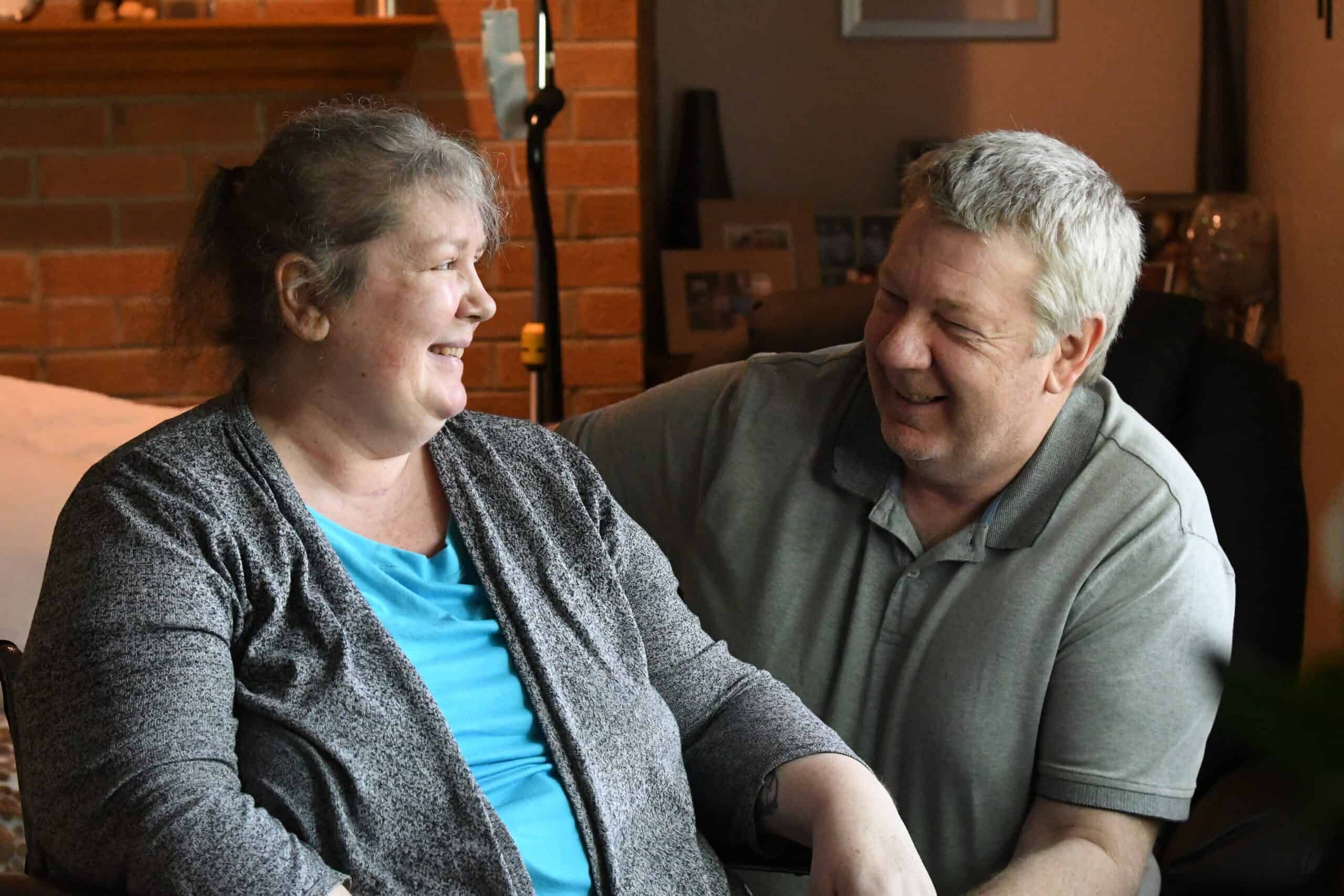The first long journey Sue and John Whitney made together was an adventure they embraced.
British by birth, the couple (along with Sue’s then-13-year-old son, Sam) moved to the United States in 2009. “We both love the American way of life and prefer to live here than in England,” John says.
They chose southwest Ohio to be close to John’s cousin in Cincinnati, and bought a small business in Centerville—Ohio Lamp and Fixture—which qualified them for a visa that allows them to reside in the U.S. Like many owners of small businesses, they faced challenges. But overall, they were happily living the American Dream.
The pandemic arrives
John and Sue’s second long journey was not of their choosing.
When the COVID-19 pandemic began, they followed the mandates and recommended precautions, including Ohio’s order to shut down nonessential businesses. But in December, they let their guard down and got together for Christmas with Sam, his wife Katie, and their son.
The following week, all four adults were ill, but with different symptoms. “We put it down to a bug,” John says. Unknown to them, they all had COVID.
Sue fell twice trying to get to the bathroom, injuring her knee and ankle. She went to Kettering Health Washington Township on New Year’s Day. She was tested for COVID-19, and the result came back positive.
From bad to worse
Sue was transferred to the COVID unit at Soin Medical Center.
“That first week was very concerning because I couldn’t see Sue,” John recalls. “We could text, but it was very sporadic. Then the next thing I know, they put her on a ventilator.”
In January and February, Sue was on and off the ventilator three times, seemingly stable but then suddenly becoming critical. After the third intubation, her doctors recommended a tracheotomy, so the ventilator could be connected through an incision in her throat.
“That really changed things for her,” John says. “I could see her body was more comfortable, not having those tubes down her throat.” The tracheotomy also made it possible to suction out Sue’s lungs as needed.
A long-term patient
But Sue’s hospital stay was far from over. As winter turned to spring, she remained in the ICU, mostly sedated, continuing her battle. “It was very up and down,” John recalls.
It was hard on John, too. “You’re sitting there, looking at your wife in bed with nine different drips going into her, and tubes in her mouth, and you just think you’re in a dream, that it isn’t real.” But he never gave up hope. “I knew she was a fighter.”
In April, Sue was at last able to leave the ICU and move to an intermediate care unit (IMC). More alert, she could interact with her caregivers. “The nurses were fantastic,” she says. “I couldn’t have asked for better care. They were there whenever I needed them.”
“They went out of their way to make things more comfortable,” John adds.
Sue and John appreciate every person involved in all stages of Sue’s care, including Heidi Malott, RN, who washed and braided Sue’s hair, and took her outside for a change of scenery. They are also especially grateful to Nurse Manager Lisa Galloway, ICU and IMC Medical Director Dr. Daniel Pearson, and Dr. Aamir Malik.
Home at last
On May 14, after 134 days in the hospital, Sue was finally released. Her caregivers gave her a special send-off, lining the hallway and cheering her on as she was wheeled out. “I will never forget that,” Sue says, her eyes tearing up. The staff also made a signed poster of well-wishes for Sue, which hangs prominently in their home.
Sue is still working toward full recovery with the help of a physical therapist. Having been bedridden for so long, she must regain the use of her arms and also learn to walk again. “It’s going to be a long road,” she says, “but I’ve just got to persevere.”










